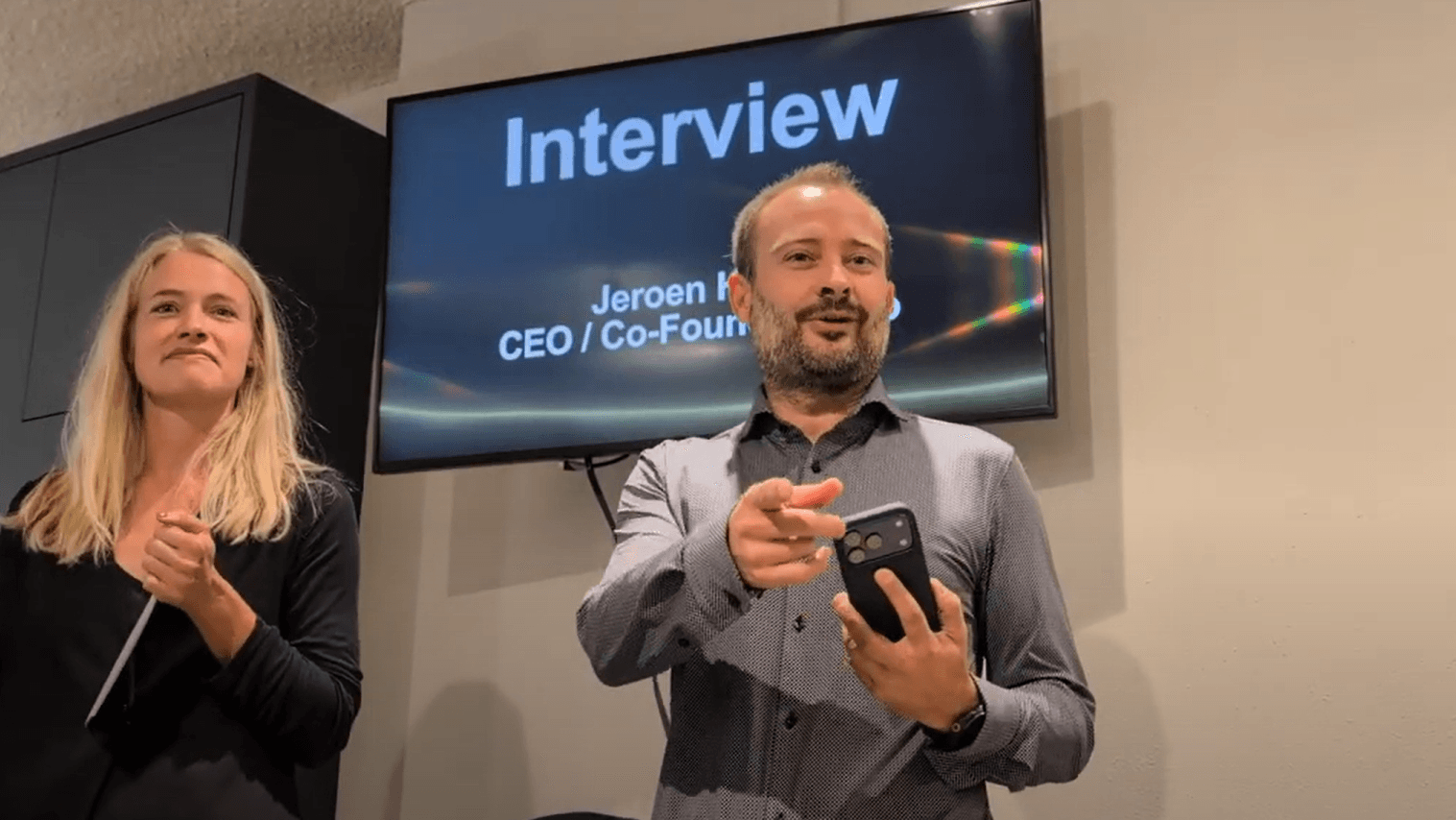EYEO Imaging makes cameras smaller, smarter, and more sustainable
EYEO Imaging is reinventing the camera sensor. CEO Jeroen Hoet shares how bold tech, strong teams & vision help raise millions in deeptech.
Published on October 4, 2025

© Eyeo
As editor-in-chief, Aafke oversees all content and events but loves writing herself. She makes complex topics accessible and tells the stories behind technology.
The smartphone camera has become the heart of our digital lives. And yet—or perhaps because of this—there is a persistent problem that manufacturers have been unable to solve for decades: the inefficient color filter. Earlier this year, the G&A Award alumnus raised €15 million for their solution to this problem. Utilizing nanophotonics, they aim to revolutionize the landscape of image sensors. During the 110th edition of Drinks, Pitches & Demos, CEO Jeroen Hoet shared his experience and advice in an interview with IO.
Jeroen, if you had to explain EYEO Imaging to your uncle at a birthday party, how would you do it?
“Let’s start with a simple example. Why do people really buy smartphones today? It’s not for calling—it’s for the camera. If you compare a phone from ten years ago with one today, the main difference is that the camera has become three or four times bigger. Smartphone makers don’t like that—it makes phones bulky—but they had no choice. A bigger camera simply means more light and better pictures.
The way color images are created today is quite inefficient: sensors use red, green, and blue filters, but they discard two-thirds of the light in the process. Our technology, developed at IMEC, utilizes photonics to split light into its constituent colors without any loss. That means the camera can shrink back to one-third of its current size, while maintaining the same performance.”

Aafke Eppinga and Jeroen Hoet at Drinks, Pitches and Demos
That sounds like a big deal for smartphones. Is that your main market?
“Smartphones are the most obvious market, and eventually we want to be there. But every color camera suffers from this inefficiency. Consider action cameras, industrial cameras, or those designed for low-light surveillance. With our technology, you can capture full-color images even in low-light conditions. Our first steps are in industrial markets, where color sensitivity is particularly important—and where customers are willing to pay for improved performance.”
EYEO Imaging builds on years of research done at imec. How do you turn cutting-edge research into a company?
“At imec, five years were spent on the research side, pushing the physics and writing papers. But once you spin out, the question completely changes: it’s no longer about the “best possible” technology—it’s about a product customers are willing to pay for. And remember, they already have working solutions today. So you need to prove not just that your tech is better, but that it’s adoptable.
That’s why building the right team is crucial. You can’t do it alone. Investors, customers, employees: they all invest in the team, not just the technology.”
Speaking of investors: EYEO raised €15 million earlier this year. How did you pull that off?
“It’s never easy. You need three things: a bold but realistic vision, strong IP to protect the technology, and above all, the right team. Technology alone won’t get you funded. Once we had the founding team in place, things really accelerated. And as a founder, you’re always pitching—whether to investors, customers, future employees, or even family. You need to convince people at every step to join you in what, frankly, is a crazy idea at the start.”
What advice would you give to other founders dreaming of raising millions for their startup?
“First, be bold—believe in yourself, your technology, and your team. Second, be all in. If you have a backup plan, you’re not truly committed, and people will notice. And third, surround yourself with great people. No one can do this alone.”
Finally, where do you see EYEO Imaging in five years?
“By next summer, we’ll already have our first evaluation kits in customers’ hands. In two years, we aim to scale production for those first customers. And in five years? We aim to establish ourselves as Europe’s leading imaging company, competing head-to-head with giants like Sony and Samsung.”
